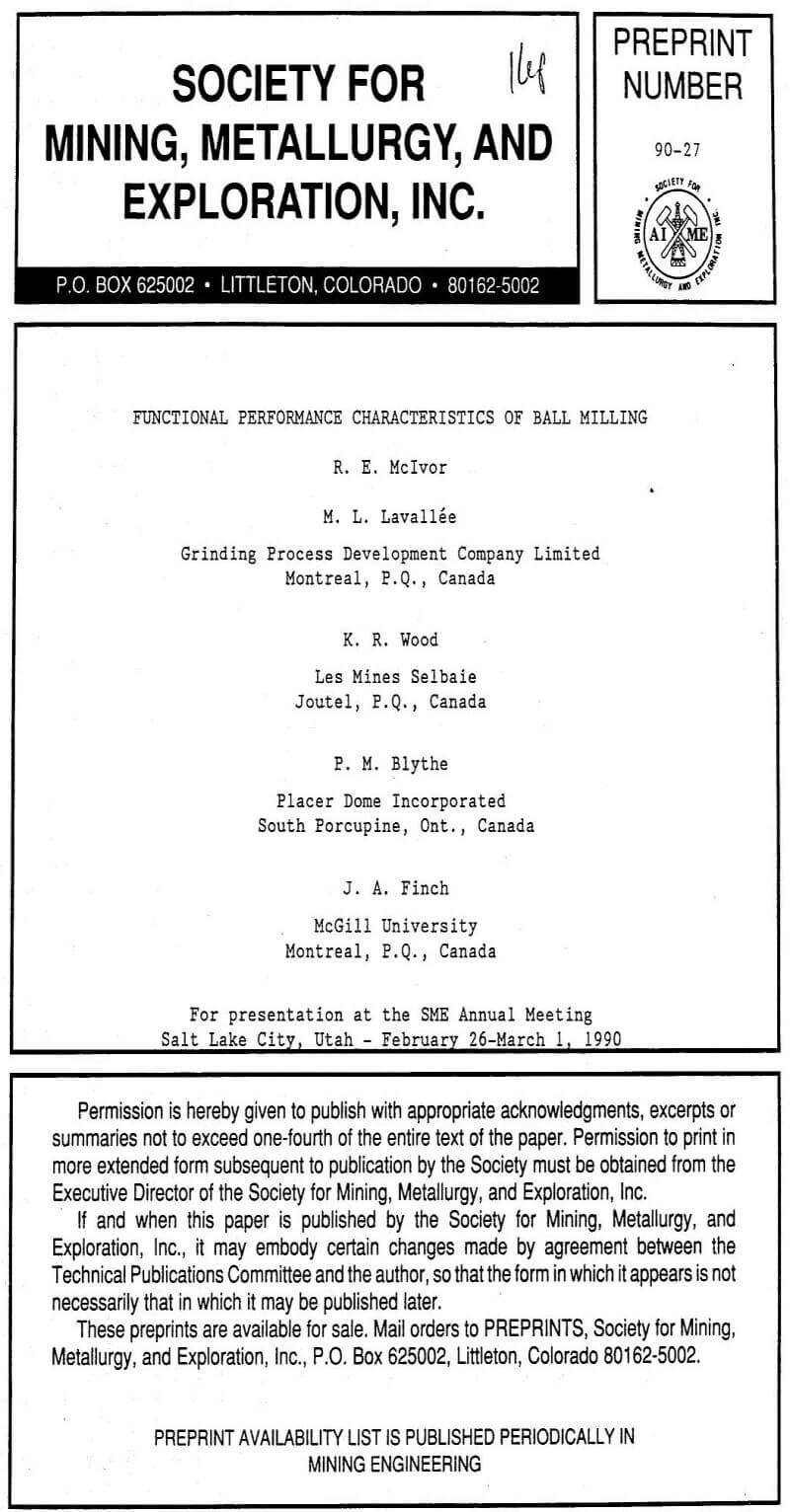Fines may be defined as any material smaller than a specified product size, and “coarse” as any material that is larger. The target 80 percent passing size of the grinding circuit product is a convenient reference point, as it is often used to express the grind size objective. This size is close to the modal value of typical size distributions of ground material, and also roughly approximates the classifier cut size.
The effectiveness of the fines removal system depends on the transportation of material to the classifier. It also depends on the ability of the classification equipment to remove the fines that are presented to it from the circuit, and to return the coarse material to the mill. Immediate and perfect sorting action would result in a circuit product size distribution dependent only on the material fracture characteristics (Austin et al, 1984), and avail the maximum possible amount of mill volume (and applied power) for the breakage of coarse particles. The fraction of fines in the mill hold-up (the “fines inventory”) may therefore be taken as a direct measure of the lack of the system’s fines removal effectiveness. Its complement, the “coarse solids inventory” represents the fraction of the mill volume (or power) which is effectively used for the size reduction of coarse particles. Therefore, it also represents the overall classification efficiency of the grinding circuit.
A simple method for estimating the relative coarse solids inventory in the ball mill has been selected. It is the average of the coarse fraction in the ball mill feed and discharge size distributions. In closed circuit grinding, the shift in these size distributions is normally quite small. A more complex relationship between mill contents and measured feed and discharge size distributions no doubt exists. However, the general correlation between the mill (or circuit) production capacity to a given product size and these size distributions is supported by a variety of observations, described as follows.
The circulating load ratio is an excellent subject for study of classification system performance because it has long been recognized as such an important factor in ball milling efficiency. Results from the classical work of Davis (1925) are shown in Figure 2. Note that an increase in circulating load ratio from 150 to 500 percent yielded an increase in production rate from 190 to 230 units, a relative increase of 21 percent. Ball mill feed and discharge size distributions associated with the same circulating load ratios are shown in Figure 3. These were produced by simulation, but are almost identical to reported data from two operating plants. Based on the circuit product size of 105 microns (150 mesh), the estimated coarse solids inventory increases from 72 to 87 percent, also a relative increase of 21 percent. Because a number of factors and their combined interactions can effect overall circuit output, there is no doubt that these particular data are somewhat coincidental. However, they are presented here as they provided the first clue that led to the discovery that this simple parameter can effectively characterize overall ball mill circuit classification system efficiency.
Coghill and deVaney (1938) also conducted experiments in a pilot plant ball mill closed circuited with a rake classifier over a wide range of circulating load ratios. They noted that, “It held true that the percentage of decrease in mill capacity was almost identical with the percentage of finished material in the composite feed. For example, when forty percent of the finished material was returned it amounted to 19 percent of the composite feed and the reduction in capacity was 21.5 percent.”
Kelsall et al (1969) were among the earliest to conduct experiments in the perfectly controlled environment provided by a computerized ball mill circuit simulator. They tested the general effect of various circuit design and operating variables, including circulating load ratio. “All product size distributions had the same 80 percent passing size, and fresh feed rate was altered to give a range of circulating loads. It was shown that the ratio of the closed to open circuit feed rate, which may be taken as a measure of the increased efficiency of closed circuit operation, was proportional to the fraction of the mill contents which was coarser than the classifier separation size.”
Laplante et al (1986) have demonstrated that the cumulative specific breakage rate (i.e., the specific disappearance rate of material of the complete size distribution down to a defined particle size) remains virtually constant over a reasonable range of operating conditions, including variations in the mill feed size distribution itself. This means that the production rate of material finer than a specified size is directly proportional to the percentage of material in the mill feed greater than this specified size, which again is a reflection of the mill coarse solids inventory.
In the more general context of the mineral processing plant, the fines versus coarse solids inventory demonstrates that classification system inefficiency not only means reduced effective grinding energy, but also the direct misapplication of that energy to the overgrinding of fines. This effect and the importance it has on grinding circuit product quality is shown by the simulation results depicted in Figure 4 (Austin et al, 1984).
Further discussion of this parameter for ball mill circuit classification system efficiency has been presented elsewhere (McIvor, 1988).
